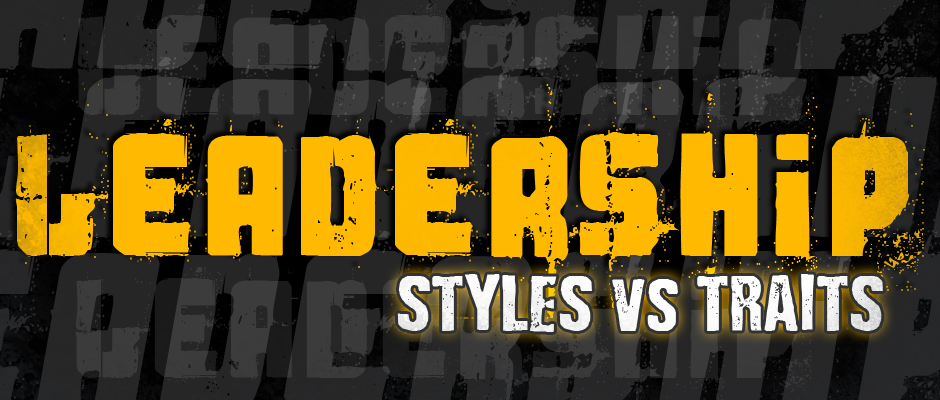Leadership Style vs Trait – Things to Consider
Those in the leadership field need to fully understand the difference between leadership style and leadership traits. While many might consider the differences subtle, the truth is that being able to identify the two can and probably will ultimately impact your organization’s overall direction and success. What follows is a comparison and contrast of style versus trait regarding leadership.
First, we must understand the words being used. One can get a stronger handle on the discussion by defining the words. A style is a manner of doing something, while a trait is a distinguishing quality or characteristic. Regarding leadership, a leader will employ both. For instance, leaders will have their own way of doing something. These are the theories or methods used to navigate their leadership. On the other hand, leaders display characteristics as they perform their tasks. These physical, emotional, social, and intellectual aspects make that leader unique.
Second, it should be noted that regardless of the style or trait, the fundamental root of leadership is often the same. Studies show that leaders have a strong desire to lead (Kirkpatrick & Locke, 2010). The reason for this desire is unavoidably paternalistic. A leader may feel they know what is best in a particular situation. They may recognize that a group is incapable of doing something independently. The leader may be the most capable person out of the lot. A leader may be pushed into power based on expertise. The dark side is when a leader may enjoy having power over another person.
Regardless, it is theorized that people with this desire often want to solve problems, be they organizational or social (Mumford, Zaccaro, Harding, Jacobs, & Fleishman, 2000). However, the effectiveness or manner of this leadership varies greatly. It ultimately depends on the style of leadership being utilized, the traits of the leader, and of course, the organization or group culture as it correlates to a specific leader.
Leadership Styles
Leadership styles vary from Transformational, Transactional, Situational, Servant, Laissez-Faire, and so on. For instance, an autocratic leadership style does not account for anyone’s ideas, wishes, or opinions. It is, by definition, an authoritarian style of leadership. Micromanagement is a great way to explain this. The styles run the entire spectrum from complete control to almost no control. Laissez-Faire leaders, for instance, have a good idea of what is going on but generally leave the followers to do their business as they see fit regarding completing the work.
Leadership Traits
Leadership traits are a little easier to identify. Some might argue that the traits are what will ultimately make up and perhaps even define the leadership style that will eventually be used. In fact, studies prove that certain traits distinguish leaders from non-leaders, including but not limited to drive, honesty, and self-confidence (Kirkpatrick & Locke, 2010).
For instance, a leader might show charisma, honesty, or passion. Other traits include being confident, caring, humble, collaborative, or fearless. One could even go as far as to include traits such as being supportive, genuine, engaged, or even visionary.
However, we should also address another set of traits that are often overlooked in leadership studies. These traits might include arrogance, rigidity, or incompetence. Being conceited, callous, or intemperate. Simply being demanding, dangerous, or insular are not exactly great things either.
How It Works
We must remember that when it comes to leadership, there are both good and bad traits and styles. Some leaders may exhibit both good and bad in either style or trait. An honest, passionate, involved, and collaborative leader would more than likely have a very hard time using a Laissez-Faire leadership style. This type of leader would more than likely use a Transformational kind of leadership style. One could see a Laissez-Faire leadership style being utilized by an insular, indecisive, lazy, or even detached type of leader. This is not to say that Laissez-Faire is a bad leadership style or that anyone who uses it is bad, this is simply a point in case. The point is simply that traits help guide the style.
Another example of how this works might come with servant leadership. The Servant Leadership style tends to put the service of others before self-interest. It provides tools and resources to complete the tasks, and it is collaborative. A leader, who is not collaborative or caring but is instead rather conceited, would more than likely not use this style of leadership.
Conclusion
Leadership styles are not leadership traits, and not all leadership styles or traits are ideal for certain situations. The appropriate leader and leadership style will depend greatly on what the organization is faced with. For instance, Bill Koch would probably not make the best leader for Google. A Laissez-Faire leadership style would probably not be the best for the NSA or FBI. Organizations, leaders, and followers must all keep these things in mind if success in the overall mission is to be achieved.
Keep going! Read my article titled “Defining Your Leadership Traits and Theories.”
References
Kirkpatrick, S. A. E. A. Locke. (n.d.). Leadership: Do Traits Matter?. Found in Pierce, J. L., & Newstrom, J. W. (2010). Leaders and the leadership process. New York: McGraw-Hill Higher Education.
Mumford, M., Zaccaro, S., Harding, F., Jacobs, O., & Fleishman, E. (2000). LEADERSHIP SKILLS FOR A CHANGING WORLD: SOLVING COMPLEX SOCIAL PROBLEMS. Leadership Quarterly, 11(1), 25-25.




